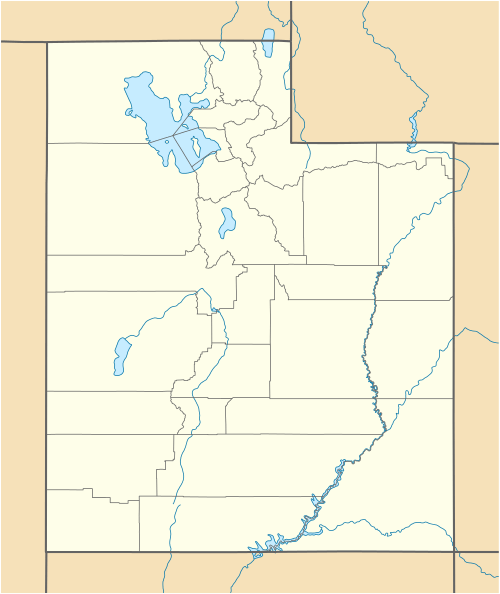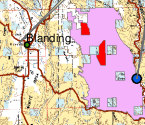Alkali Ridge
|
Alkali Ridge | |
|
Extract from a BLM map of eastern Utah; the National Historic Landmark is shown in red | |
  | |
| Location | San Juan County, Utah, USA |
|---|---|
| Nearest city | Blanding, Utah |
| NRHP Reference # | 66000740 |
| Significant dates | |
| Added to NRHP | October 15, 1966[1] |
| Designated NHLD | July 19, 1964[2] |
Alkali Ridge, also known as Alkali Point, is a set of widely scattered archaeological remains of the earliest forms of Puebloan architecture, representing a period of transition from scattered, pit-style dwellings to a settled agricultural lifestyle. These multi-story buildings and kivas have yielded high-quality ceramics, and form the type location for the Pueblo II period (c. 900 CE – c. 1100 CE).
It was declared a National Historic Landmark in 1964.[2]
Cacao residue was detected in Site 13 ceramics after testing by University of Pennsylvania and Bristol-Meyers Squibb researchers.[3]
References
- ↑ National Park Service (2007-01-23). "National Register Information System". National Register of Historic Places. National Park Service.
- 1 2 "Alakali Ridge". National Historic Landmark summary listing. National Park Service. Retrieved 2008-04-01.
- ↑ Cacao consumption during the 8th century at Alkali Ridge, southeastern Utah
External links
- BLM page on the Alkali Ridge area
This article is issued from Wikipedia - version of the 6/27/2016. The text is available under the Creative Commons Attribution/Share Alike but additional terms may apply for the media files.
